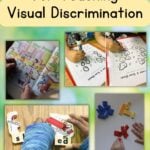Visual Discrimination Activities: 9 Great Ideas
This post may contain affiliate links. As an Amazon affiliate, we earn from qualifying purchases. See our disclosure policy.
Learn what visual discrimination is, and read a complete list of hands-on visual discrimination activities to use with pre-k and kindergarten students. The activities are designed to help practice and improve this important skill!
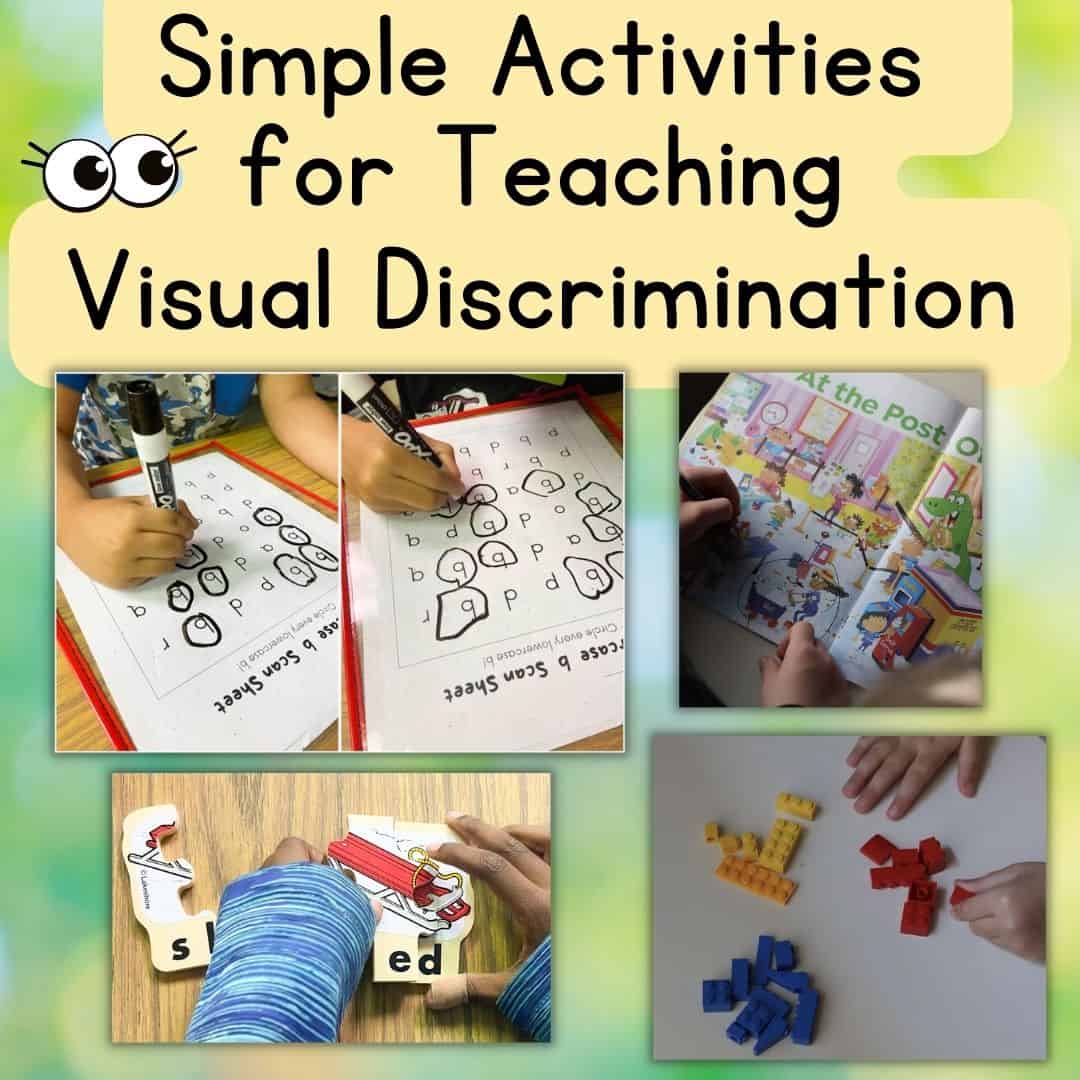
What Is Visual Discrimination?
When we talk about visual discrimination, we’re talking about an important foundational skill. It’s using our eyes to spot differences, similarities, and details.
Visual discrimination helps us compare and discriminate between things, which is ultra important for children when they’re learning letters and ultimately, learning to read!
Visual Discrimination Activities
Practice activities help to improve this skill in young learners! And there are so many ways we can encourage our students in this!
These visual discrimination activity ideas are multi-sensory, engaging, and perfect for encouraging students to improve this skill. For even more practice, be sure to get our visual discrimination worksheets, too!
🪙 Sorts Activities
Sorts are great hands on activities that make learning fun and interesting for tactile young learners.
Using worksheets that require kids to cut out the objects that need to be sorted also helps build fine motor skills. As an added bonus, cutting also helps lead to pencil control and handwriting success.
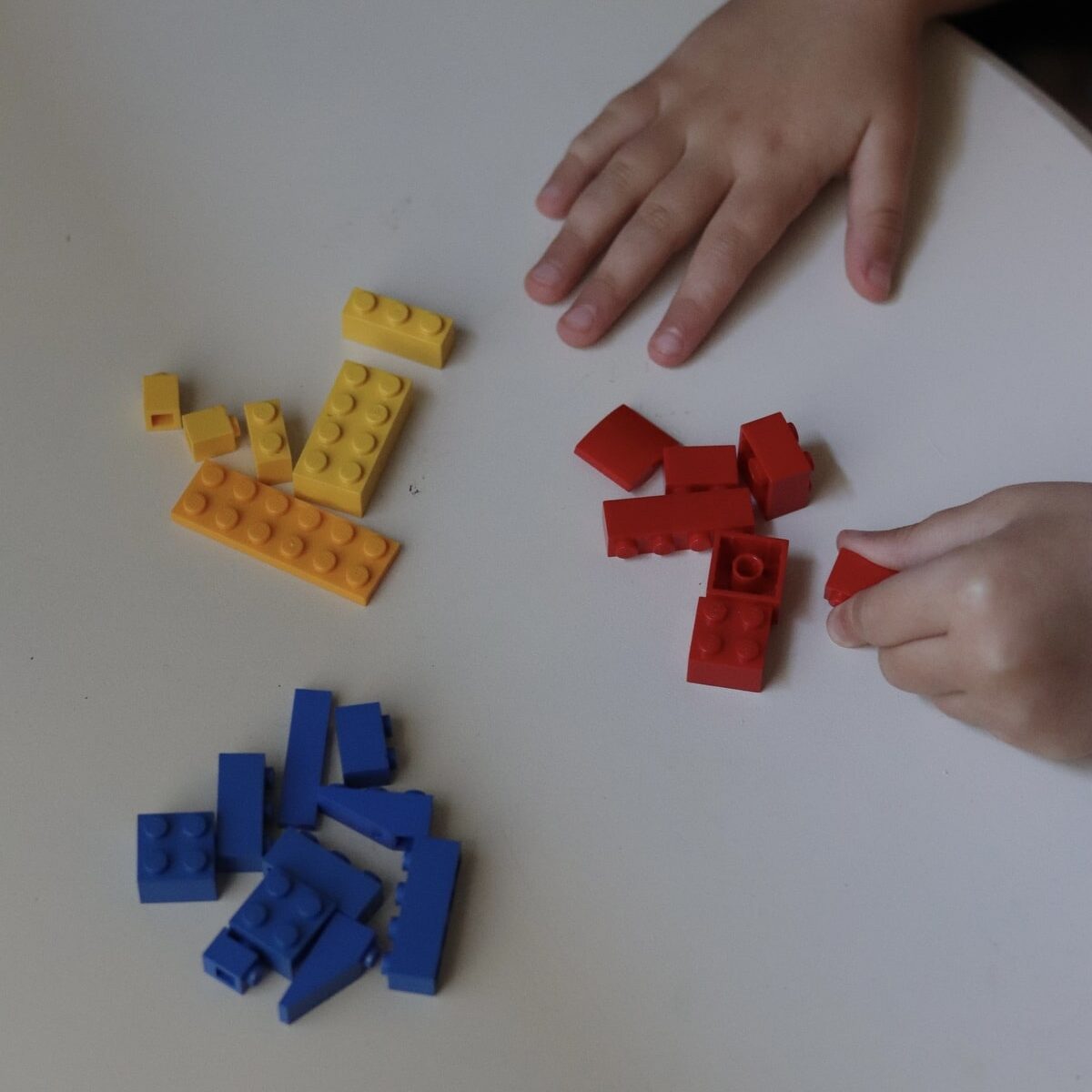
Sorting Ideas
- Legos: Sort by color or shape.
- Coins: Sort by color, size or type.
- Magnetic Letters: There are tons of possibilities when it comes to sorting magnetic letters! Sort by color, uppercase/lowercase, vowels/consonants, letters found in a word, and more.
- Sort the Letters: Choose 3 or 4 different letters and give the child more than one of each letter. Have them sort the same letters into rows or columns.
- Sort by Shape: Ask children to sort according to features. You can sort letters by circles, short sticks, tall sticks, humps, slants, etc. This is GREAT for visual discrimination.
- Sort by Color: Many magnetic letter sets include multicolored letters. Have children sort by color.
- Vowels/Consonants: Introduce these academic terms early on, and ask your children to sort the vowels and consonants into separate groups.
- Matching: Have children match the magnetic letters to an alphabet chart. Ask children to complete this sort in alphabetical order, starting with a, then moving to b, etc. Have them sing the abc’s as well. Then, if children get stuck and are unsure of the name of which letter comes next, teach kids to do this: touch the alphabet chart starting at the beginning – letter A. Then sing and touch each letter until they get to the one that comes next. This helps 1-1 correspondence as well as firms up their alphabet recognition skills.
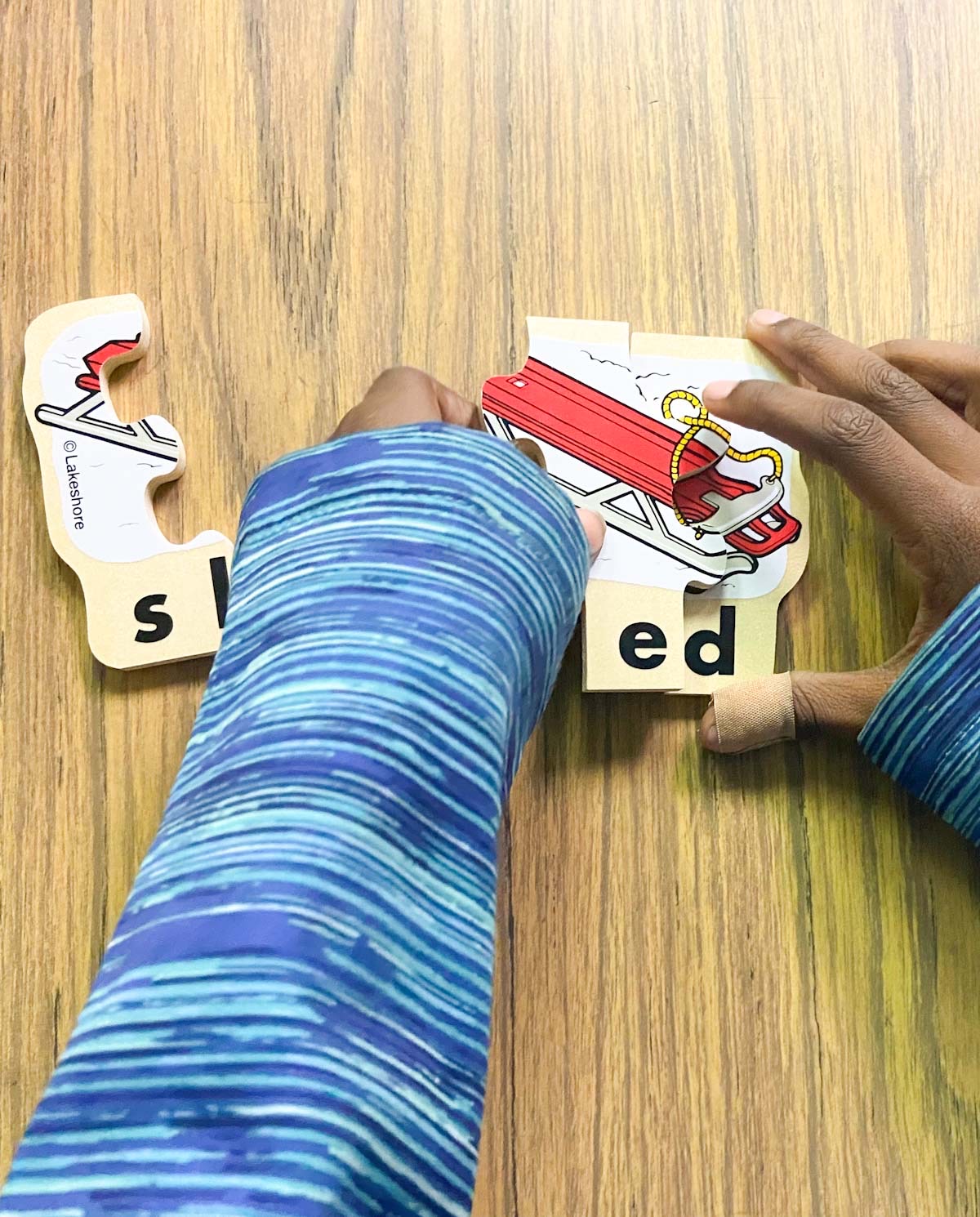
🧩 Puzzles
All puzzles are excellent! Start with simple, age appropriate puzzles, and gradually progress to more challenging ones.
This is helpful in building visual discrimination because using the picture to guide the orientation of the pieces enables deeper learning to take place and helps build visual and spatial discrimination.
📋 Matching or Memory Games
Use matching games from the dollar store and have children match the pieces. You can also make it practical and ask children to match household items like socks, buttons, or silverware.
Remember, it doesn’t need to be fancy or complicated to help children build this skill!
✍️ Visual Scavenger Hunts
Using one of your old magazines, give your child a specific item to find on the pages. These can be pictures, certain letters, or even common sight words!
For example, “Find all the letter b’s” OR “Find all the words that start with b.” To make this a bit more fun, provide your child with a highlighter to help engage them in the task.
Studies show that colors influence memory performance and help with visual discrimination!
👁️ Scan Sheets
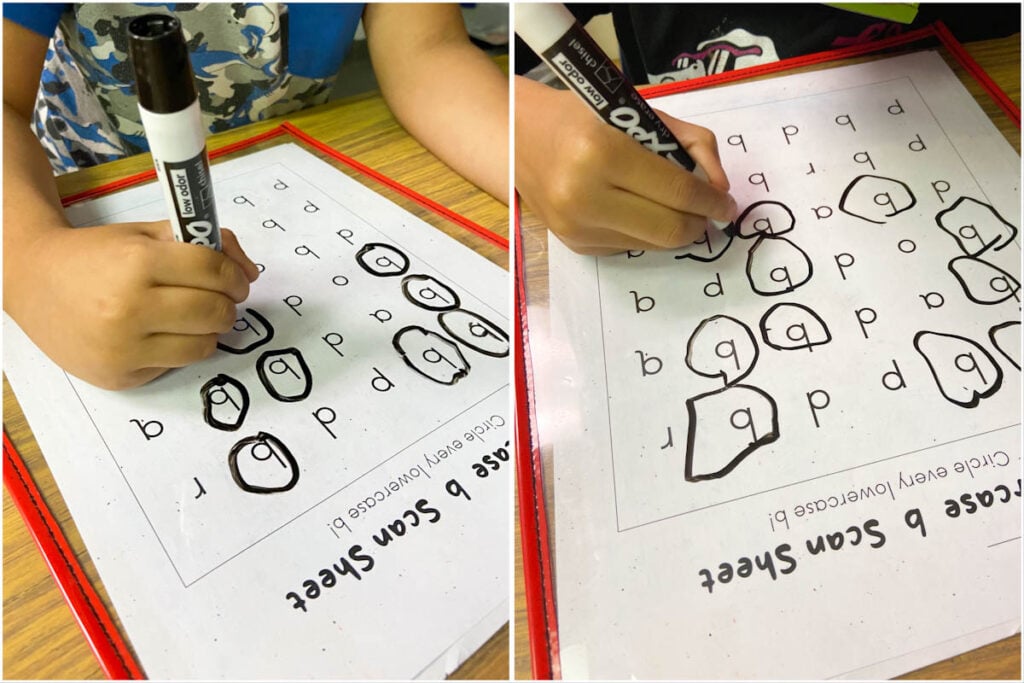
I make and use scan sheets all the time. In a nutshell, it teaches kids to ‘scan’ the text or pictures in an intentional way.
Use scan sheets to teach directionality (reading from left to right) and return sweep (when you get to the end of a line, move down a row and go back to the left side of the page to begin again).
👉 You can get our free scan sheets for commonly confused letters (pictured above) or easily type them up for anything you’re teaching like letter sounds or sight words.
Picture Searches
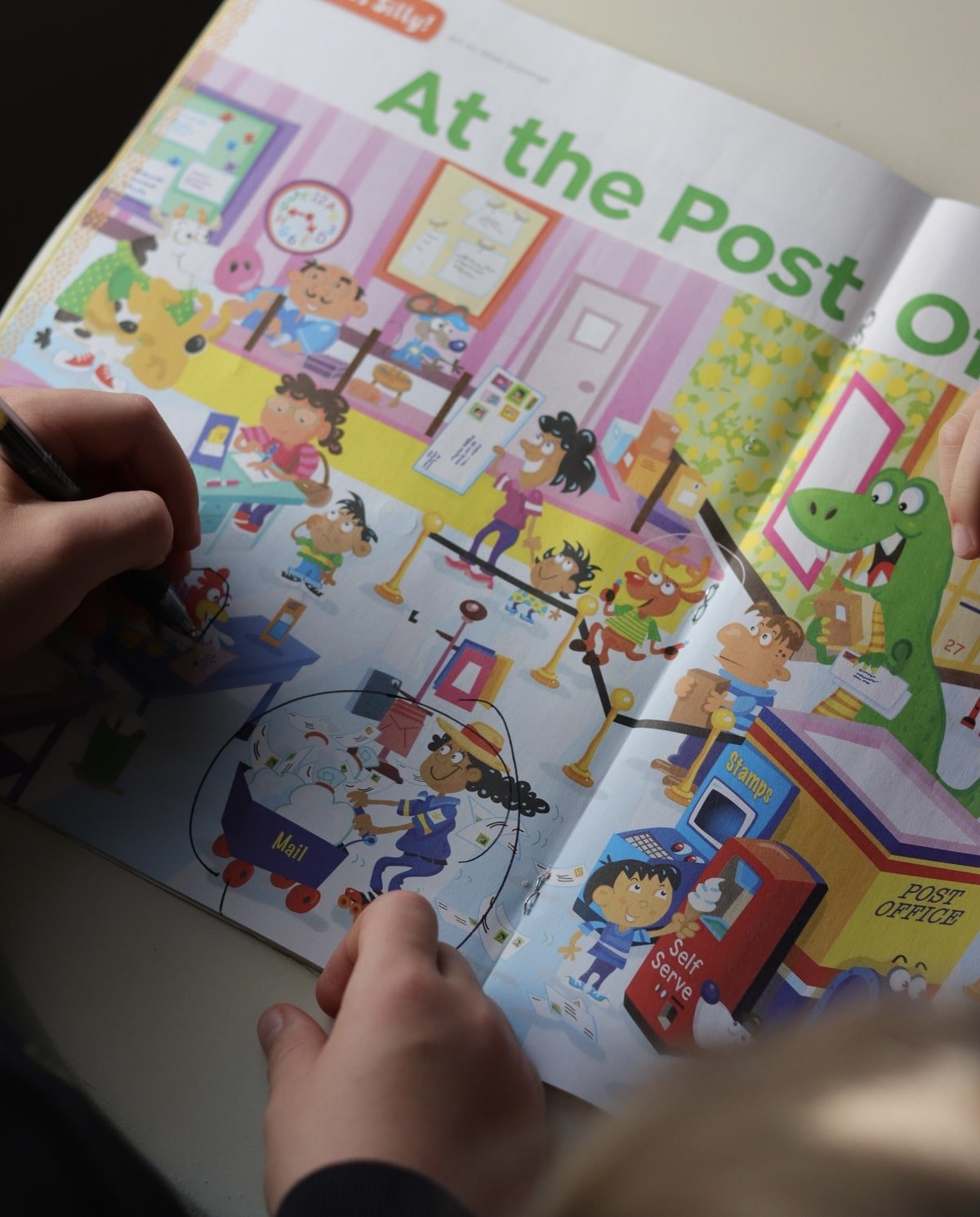
My children have had a monthly subscription to Highlights magazine for years now. Visual Discrimination tasks are included in every single issue, and targeted based on age and difficulty!
In fact, Highlights has developed its very own “Hidden Pictures” magazine that you can subscribe to!
Related Resources
- B/D Reversal Strategies & Poster
- Letter Tracing Worksheets for proper letter formation
- Letter & Picture Matching Worksheets
We’d love to hear about your experience using this resource!
Please leave a comment below or tag us on Instagram @literacylearn!

